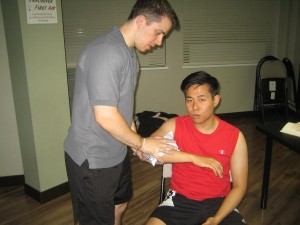Most of us sustain various forms of wounds throughout life during daily activities. Most minor injuries result to impaired skin cells that lose function and simply require time and care to heal. Some are deeper in which the underlying tissues and organs are involved. Depending on the location, cause and depth, a wound can range from simple or dangerous.
Types of wounds
Acute or chronic
- Acute – heals without any complications in the expected time span
- Chronic – takes a longer time to heal and there is a risk for some complications
Open or closed
- Open – wounds with uncovered underlying tissue and/or organs to the external environment
- Closed – damage occur without exposure of the underlying tissues and organs
Clean or contaminated

Clean injuries do not have any debris or foreign materials inside. As for the contaminated type, debris, dirt or other fragments are present as well as bacteria.
Internal or external
The internal wounds occur from a disrupted immune and nervous system functions and/or diminished supply of oxygen, blood or essential nutrients to an affected area. The external type is caused by penetrating items or non-penetrating ordeal as well as other various causes such as the following:
- Non-penetrating – these are usually caused by blunt trauma or friction with other surfaces. There is no break in the skin.
- Penetrating – these are caused by trauma that breaks through the skin even reaching the underlying tissue and organs.
What are the indications
The indications depend on the site, depth and causative agent. Generally, there is pain, swelling, redness, bleeding and loss of function in the affected area. Other symptoms such as fever, warmth, foul-smelling drainage might indicate an infection.
Treatment
The treatment is different for every type of wound. Nevertheless, the treatment should include the following:
- Clean the injury using regular tap water to eliminate all foreign materials. If possible, wash the area using soap. In some cases, flushing might be required using a medical syringe while others require surgical debridement to get rid of dead tissue or foreign material.
- Proper care and dressing along with the application of local antibiotics is also needed. These can prevent infection as well as provide protection against the environment. Some anti-inflammatory and pain medications might be prescribed to minimize the discomfort and improve quality of life.
- If the last tetanus shot was administered 5 or more years past, it is suggested to receive a new shot or booster particularly in cases of dirty cuts as well as animal or human bites.
More Information / Disclaimer
The information posted on this page on open wounds is for learning purposes only. Learn to recognize and manage open wounds and how to perform proper wound care by taking a standard first aid course with Ottawa First Aid.

